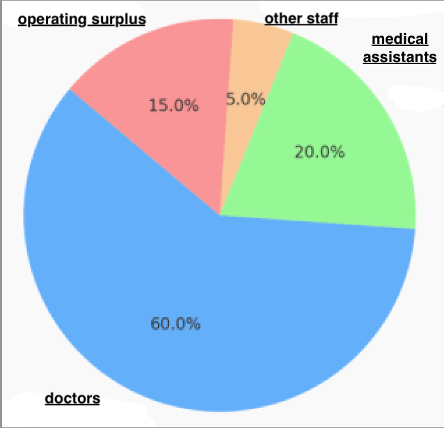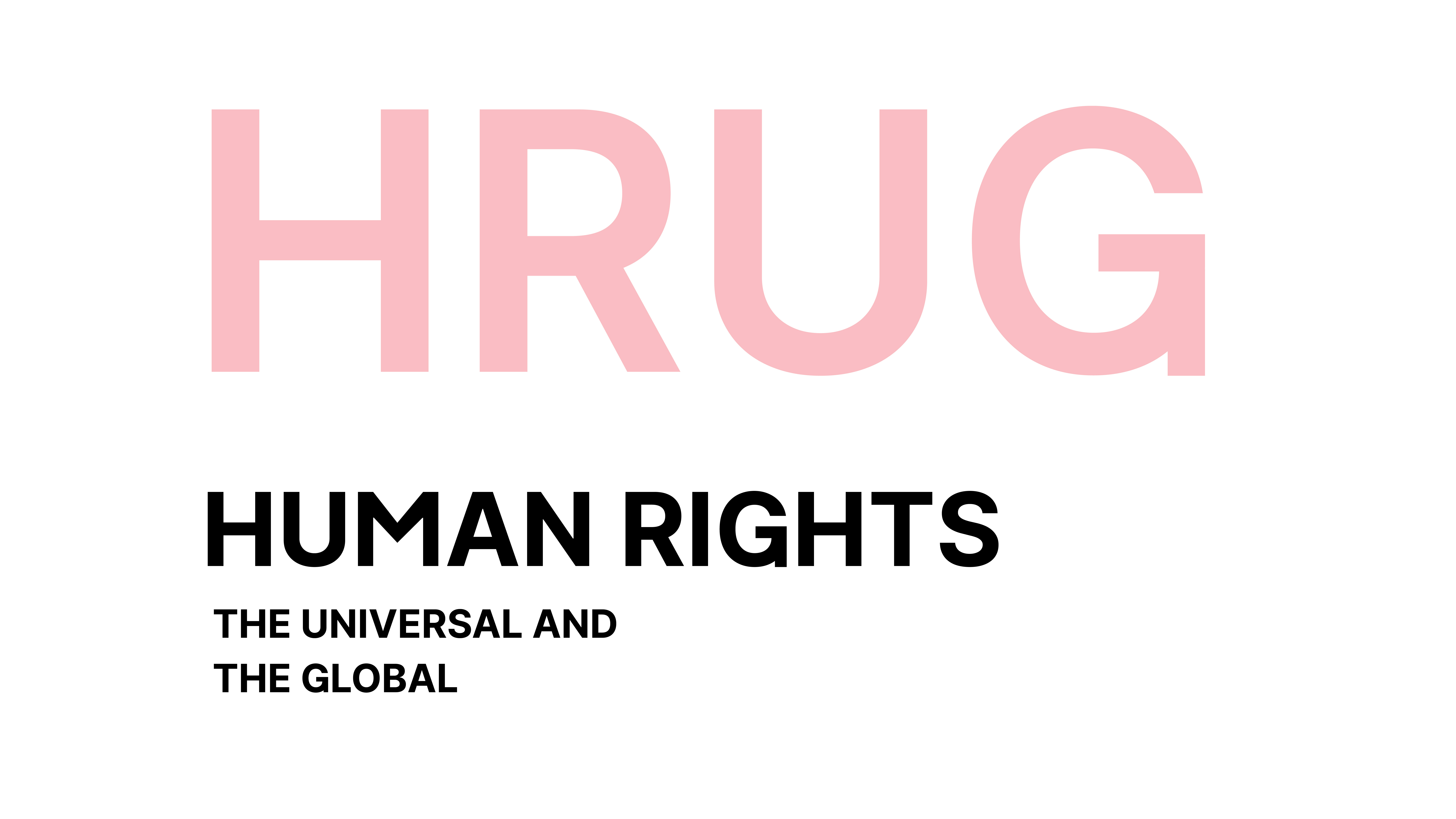An advertisement from the association of general practitioners and specialists in Germany speaks of 51.600.000.000 € gross added value. Without any question, the work of the medical professions – and these are the doctors, nurses, doctor’s receptionists and not least cleaning staff, securing the conditions under which the operations can be executed under hygienic conditions – is invaluable. And exactly this is a reason for asking:
Isn’t speaking of gross added value a misnomer?
Suich value is calculated as part of the national accounts (VGR). It indicates the contribution made by a particular industry or sector to the total economic output (gross domestic product, GDP) of a country. The formula is as follows
Gross value added = production value − intermediate consumption
Looking – with the help of ChatGPT – at the contributions of different actors we get the following result.

The largest share is accounted for by general practitioners and internists – so the same source; and there we learn that the share of hospitals is slightly higher (estimated) 65.000.000.000 €; of special interest is finally the following
1. people with statutory health insurance (GKV)
- Proportion of the population: approx. 87% (approx. 73 million people)
- Share of services provided by medical practices: approx. 75 %
- These services are mainly billed via the Associations of Statutory Health Insurance Physicians (KV).
- Typical features:
- Standard service volumes
- Budgeting
- EBM billing (standardised assessment scale)
- Higher patient numbers, shorter treatment times per case
2. privately insured patients (PKV)
- Proportion of the population: approx. 11-12 % (approx. 9 million people)
- Share of services provided by medical practices: approx. 25 %
- Services are billed directly to the private health insurance company or the patient.
- Typical characteristics:
- No budgeting
- GOÄ billing (scale of fees for doctors)
- Higher turnover per patient
- Economically an important counterbalance to the SHI system for many practices
Conclusion
Although privately insured patients represent a minority of the population, they contribute a disproportionately high share to the added value of medical practices through higher remuneration rates.
(OpenAI ChatGPT (2025) ChatGPT response to Peter Herrmann, 14.05.2025: How are the benefits distributed between those with compulsory insurance and those with private insurance?)
On the level of simple calculations, we must add the figures from the insurances and the state: the administration of payments (including the paper and ink for completing documents, and the time etc. entitled people spend on the various tasks) – this would result in the increase of the contribution of the health sector to the ‘Wealth of Nations’.
So far, so good – but we are moving in dangerous terrain, aren’t we?
Though everybody knows that the ‘net worth of people’ is not about valuing people themselves but their assets in the widest sense, the formulation is …., well, possibly a kind of Freudian Slip, as there is nothing new in the West, already enshrined in the words of the gospels:
For to him who has will more be given, and he will have abundance; but from him who has not, even what he has will be taken away
( Matthew 13:11–12, RSV)
It is an undeniable fact that money often determines life and death – if only because it allows for a ‘good life’, thus making a higher life expectancy at least probable. In other words, high net worth people are more likely to live a long life, and staying healthy.
Still, life is life and there should not any monetary value-formula applied.
While this is – presumably – easily accepted by a majority, the conclusions are not always accepted with the same ease.
• The question is not primarily one that concerns any immediate ‘valuation’; the question is the valuation of the conditions under which people live – by the way, this is also a debate concerning the principle of subsidiarity, recently looked at, in connection with the recent election of pope Leo XIV, suggesting with the choice of his name to be heir of Leo XIII who decisively contributed to the social teaching of the Catholic Church.
Suggesting of the Gross Added Value of health services in whichever form is as wrong as it is wrong to look at such services in the light of profitable investment – human beings are the most important ‘productive force’, but central is that it is about
dealing
human beings,
with feelings,
not leaving
but seeing,
ready for dealing
where money is not reaching.
• Sure, there are tricky situations,: what to do if the resources are not sufficient to do what is necessary – it will always a problem that staff or medical equipment is not always sufficient to deal with all cases; it will a more or less eternal problem that research aiming to develop urgently needed drugs[1] is not fast enough – in a way this is the case by definition; it cannot be completely avoided that preventive measures are not in all cases have the expected/aimed at result; and yes, all this is a case of available financial resources. Nevertheless, the first question is not how much society wants to spend but the first question must be concerned with the valuation of human lives for the sake of human lives, invaluable.[2]
• This brings us to a second result of even a rough analysis of the data. Earlier, it had been stated:
Conclusion
Although privately insured patients represent a minority of the population, they contribute a disproportionately high share to the added value of medical practices through higher remuneration rates.
(OpenAI ChatGPT (2025) ChatGPT response to Peter Herrmann, 14.05.2025: How are the benefits distributed between those with compulsory insurance and those with private insurance?)
The KI-answer continued:
For many registered doctors, the proportion of private health insurance patients is crucial to the profitability of their practice.
Is it unreasonable to ask why such a detour is necessary? At the end we are witnessing a strange redistribution:
- the inequality of the distribution of total societal product
- is translated into the inequality of services
- which is seen as necessary to guarantee some form of equality,
- though it does not mean overcome inequality
In other words: why is the second step necessary? The answer may be that it is a mechanism similar to money laundering: Instead of overcoming the ‘production of inequality’ or instead of using taxation as means of redistribution we find a mechanism of limiting redistribution and suggesting that this limitation is performance-related.
• Furthermore, in which way ever we interpret what had been said so far, there remains a structural contradiction: remember the point of departure: 51.600.000.000 € gross added value – this is meant to be an aggregate figure, speaking of the societal figure, the contribution to the value that had been added to the societal value. However, when we look at the questions of redistribution we refer to individual level – even if it is about groups of individuals. Here we are also confronted with one of the fundamental shortcomings of so-called social law: while it may be – in one way or another – social in moral or ethical terms, it remains structurally limited to an individualist perspective. A shift is urgently needed, looking in a serious way at social investment: then it is transforming socially produced assets in socially consumed assets. Such assets are concerned with producing and maintaining health including preventing ill-health; but equally important are areas as education (much more than job-oriented training), artistic activities, political and voluntary/societal engagement etc. Important is to include the time dimension: positive action taken today (e.g. providing a broad education) may make negative action to be taken later (e.g. dealing with drug abuse, imprisonment …) redundant.
At the end and in the best case 51.600.000.000 € gross added value may be translated into a 100 percent better society, rights-based, not resulting from mercy.
[1] As it had been the case during the Corona crisis
[2] As long as those who are living want to live.
